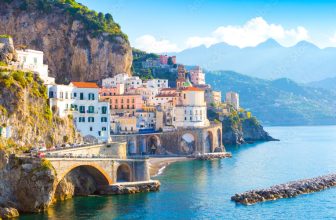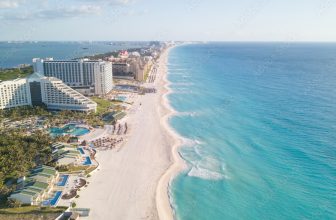
The Grand Canyon is a spectacular natural formation that spans two hundred and seventy miles. It is noted for its layered bands of red rock that reveal millions of years of geological history. It averages 10 miles across and a mile deep, and covers two hundred and seventy square miles. Most of the canyon is protected as a national park. The Colorado River winds through the canyon, creating white-water rapids and spectacular vistas.
Human history
Archaeologists have discovered ruins at the Grand Canyon, revealing that prehistoric humans first inhabited the region during the last Ice Age. Archaeologists have discovered large stone spear points and hundreds of split-twig figurines made into animals such as deer and bighorn sheep. The ruins of ancient civilizations are also visible throughout the canyon. These ruins are evidence that the canyon was once a place of spiritual and cultural importance.
The earliest humans to inhabit the area were the ancient Anasazi and the Cohonina, who lived along the rim and inside the canyon. They cultivated crops and hunted, and lived in communities. They were dependent on hunting, gathering, and limited agriculture. In later centuries, many of these people migrated to other parts of the region, where they established a trade network. Today, many descendants of the ancient Puebloans still live outside of the park.
The ancient people who lived in the area hunted and foraged throughout the canyon. Many of their activities may have been influenced by seasons, and they might have used the same trailheads we use today. While their hunting and gathering techniques were different from today, they may have been able to withstand climate change and weather the effects. The archaeological remains of their culture include masonry structures and objects carved out of the upper reaches of the pinnacles.
Geologic history
The Geologic History of Grand Canyon is a remarkably complex subject. What exactly happened during the formation of the canyon? The geologic history of the Grand Canyon begins about 1.7 billion years ago, but much of the information is missing from the early history of this place. While the youngest rocks in the canyon are only about 300 million years old, the canyon has undergone several periods of intense erosion. The rapid movement of the Colorado River must have been particularly rapid during these periods.
The Tonto Group formations were laid down about 30 million years ago, during the early to middle Cambrian Period. Trilobites and brachiopods are the most common fossils found here. Their skeletal remains are surprisingly well preserved. The rocks are arranged in a horizontal layer, and the geologic history of the Grand Canyon reveals the times and locations of their deposit. These layers also demonstrate the principles of the Law of Superposition, which states that sediments are deposited in successive layers in time.
The Colorado River, which carved the Grand Canyon, is the only example of a geologic process in which the rocky bedrock of the region was cut away by rivers. The water was so fast that it actually pulled off large blocks of bedrock. These large blocks were then thrown downstream. These pieces then banged against the bedrock and further removed them from the Grand Canyon sequence. By 1.2 million years ago, the Colorado River had cut through this newly-uplifted landscape, exposing the underlying bedrock. Erosion has caused the formation of the temples, buttes, and other geological features that are unique to the region.
Colors of the canyon
When you visit the Grand Canyon, you’ll find that the landscape is awash in vibrant colors. The canyon’s layers are made of sediment and minerals that have varied in hue throughout time. A green tint is present in some areas, while others are dominated by the brilliant reds and oranges of the Colorado River. No matter which time of day you visit, you’ll find a new hue to delight in.
The oldest layers of the canyon are the Supai Group, which is made up of lava flowing over rock, creating the wide, canyon-like gorge. These layers of rock are filled with fossils and indicate a warm, shallow sea existed during the time they were formed. These layers are 57 to 600 feet thick, and they are composed of layers of decay and erosion. You can also find layers of mud, which are reddish in color.
While the Colorado River carved the Grand Canyon, the different rock layers created smaller canyons and plateaus. These layers of colorful rock are reflected in the canyon’s depth and size. As you view the canyon from above, the colors of the rocks will change. In the summer months, the rocks will be a bright, vivid orange, while the chilly winter months will add white and snow-capped ridges and rock formations to the mix.
Size
The Grand Canyon is an extraordinary natural phenomenon. It is about 18 miles wide and 250 miles long, and it is one mile deep. Over millennia, it has been carved by wind and water, resulting in the incredible size of this wonder of the world. Its age-old rock layers are particularly valuable, as they reveal the long history of Earth. Rock layers date back to the pre-Cambian period. A one-mile walk through the canyon will reveal an astounding variety of colors that date as far back as the pre-Cambian period.
There are three basic types of rock in the Grand Canyon. In a nutshell, all three are made up of red rock. The most common is granite, which is a type of igneous rock. Sedimentary rocks, on the other hand, are composed of mud and sand. Metamorphic rocks are formed when high pressure and temperature combine with a rock’s composition to create a new type of rock.
The Grand Canyon is larger than Rhode Island. The park covers an area of 1,902 square miles, which is equivalent to ten times the size of Delaware and Rhode Island combined. The Grand Canyon is also the site of several endangered species that live in the desert scrub. Aside from being so large, the Grand Canyon has a rich cultural history. The Grand Canyon was formed by the erosion of countless ancient cultures. Today, the Grand Canyon National Park contains numerous rock formations dating back 950 million years ago.
Accessibility
Those with mobility issues should not hesitate to take advantage of the accessible tour options available in the Grand Canyon National Park. Several tour options are designed to meet the needs of individuals with disabilities, and the Grand Canyon has an abundance of wheelchair-accessible restrooms and walkways. There are also accessible bus tours and elevators. You should also check with the park entrance stations for information about accessible tours. In addition, you can visit the Yavapai Geology Museum and the Kolb Studio if you’d like to learn more about the park’s accessibility.
Although accessibility standards were not in place when the Grand Canyon was originally built, the park has recently made changes to its facilities to make them more accessible. Wheelchair-accessible restrooms are available at some of the popular park overlooks. A narrated bus tour can also be reserved if you have special needs. The National Park Service also provides an accessible guidebook. The guidebook also lists wheelchair-accessible narrated bus tours and a list of accessible restrooms.
The Hermit Road, a paved walkway along the rim of the Grand Canyon, is wheelchair accessible and provides great views. The railroad tracks have lifts to assist passengers with mobility devices. In addition, both First and Coach class railcars offer ADA-compliant restrooms. You can even take a wheelchair on the train. However, make sure to get an ADA-compliant parking space before you board. This will prevent any confusion.
Skywalk controversy
The latest developments in the skywalk controversy in the Grand Canyon involve a dispute over sovereign immunity. The federal government waived sovereign immunity for the Grand Canyon Skywalk project in 2003, but the Sa’ Nyu Wa tribe refused to agree to the waiver. The Jin tribe has accused Sa’ Nyu Wa of fraud and embezzlement, and claimed that it was immune from litigation by claiming sovereign immunity. But a judge ruled that the tribe had failed to maintain adequate financial records and pay management fees and other necessary expenses. The judgment ordered the tribe to file for bankruptcy.
As a result of the ruling, the Hualapai Tribe have reached a settlement. The settlement ensures the tourist attraction can continue operating. According to the ruling, the Hualapai Tribe owns the skywalk, which is built on reservation land. David Jin, who built the attraction, is seeking damages in the order of $277 million. The Hualapai Tribe’s appeal of the decision will be heard by U.S. District Judge David Campbell.
The Hualapai Indian Tribe filed a motion to dismiss GCSD’s first amended complaint in February 2012. The Hualapai tribe filed a response to the Hualapai’s motion to disqualify GT as counsel. The Hualapai and GCSD then joined the motions. A final resolution is expected in the near future. However, in the meantime, the Hualapai Indian Tribe will likely continue to fight for the Skywalk.






